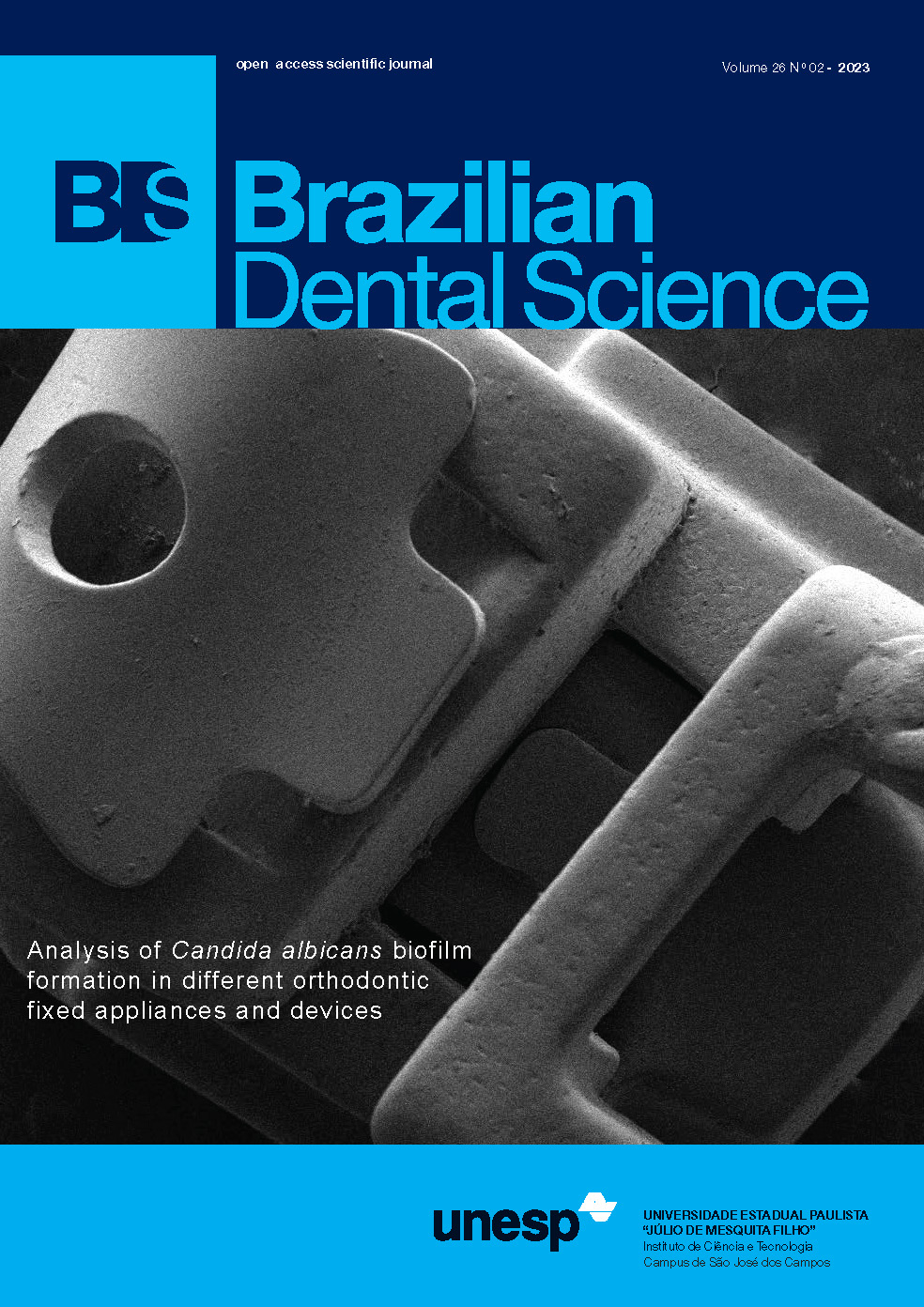Mechanical behavior of implant-supported full-arch prostheses in different locations in the maxilla: 3D-FEA and strain gauge analysis
DOI:
https://doi.org/10.4322/bds.2023.e3771Resumo
The maxillary bone restriction can limit the implants position to support a full-arch prosthesis. Objective: Therefore, this study evaluated the biomechanical behavior of a full-arch prosthesis supported by six implants in different configurations: group A (implants inserted in the region of canines, first premolars and second molars), group B (implants inserted in the region of first premolar, first molar and second molar) and group C (implants in second premolar, first premolar and second molar). Material and Methods: The models were analyzed by the finite element method validated by strain gauge. Three types of loads were applied: in the central incisors, first premolars and second molars, obtaining results of von-Mises stress peaks and microstrain. All registered results reported higher stress concentration in the prosthesis of all groups, with group C presenting higher values in all structures when compared to A and B groups. The highest mean microstrain was also observed in group C (288.8 ± 225.2 microstrain), however, there was no statistically significant difference between the evaluated groups. In both groups, regardless of the magnitude and direction of the load, the maximum von-Mises stresses recorded for implants and prosthesis displacements were lower in group A. Conclusion: It was concluded that an equidistant distribution of implants favors biomechanical behavior of full-arch prostheses supported by implants; and the placement of posterior implants seems to be a viable alternative to rehabilitate totally edentulous individuals.
KEYWORDS
Dental implants; Biomechanical phenomena; Dental prosthesis; Finite element analysis; Maxilla.
Downloads
Downloads
Publicado
Como Citar
Edição
Seção
Licença
TRANSFERÊNCIA DE DIREITOS AUTORAIS E DECLARAÇÃO DE RESPONSABILIDADE
Toda a propriedade de direitos autorais do artigo "____________________________________________________________________" é transferido do autor(es) para a CIÊNCIA ODONTOLÓGICA BRASILEIRA, no caso do trabalho ser publicado. O artigo não foi publicado em outro lugar e não foi submetido simultaneamente para publicação em outra revista.
Vimos por meio deste, atestar que trabalho é original e não apresenta dados manipulados, fraude ou plágio. Fizemos contribuição científica significativa para o estudo e estamos cientes dos dados apresentados e de acordo com a versão final do artigo. Assumimos total responsabilidade pelos aspectos éticos do estudo.
Este texto deve ser impresso e assinado por todos os autores. A versão digitalizada deverá ser apresentada como arquivo suplementar durante o processo de submissão.




























